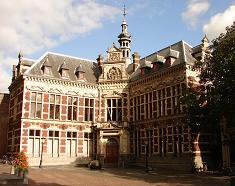Surasree Mazumder
(Variable Energy Cyclotron Centre, Kolkata)
The momentum dependence of the drag and diffusion coefficients of heavy quarks propagating through a quark gluon plasma (QGP) have been evaluated. The effects of the equation of state and momentum dependence of transport coefficients on the suppression of heavy flavours in QGP have been studied. We observe that the momentum dependence of the transport coefficients plays crucial role in the suppression of the heavy quarks and, consequently, in discerning the properties of the QGP using heavy flavors as a probe. We use the experimental data on nuclear suppression of heavy flavours and hadronic multiplicity from RHIC and LHC to constrain the initial condition of the QGP expected to be formed at nuclear collision at RHIC energies.
Again, we have calculated drag and diffusion coefficients using Hard Thermal Loop(HTL) approximations. In this case we have shielded the infra-red divergence by the effective gluon propagator dictated by HTL perturbation theory.
Summary
We have found out quantitatively that radiative energy loss plays more dominant role in the nuclear modification factor than the collisional loss.
We have obtained the value of the initial entropy density, which varies from 20 to 59/fm^3 depending on the value of the velocity of sound suggested by lattice QCD. Our investigation leads to a conservative value of the initial entropy density of ∼20/fm^3 with a corresponding initial temperature of ∼210 MeV, which is well above the value of the transition temperature predicted by lattice QCD.
As for the HTL approximated transport coefficients, we have found that there are considerable differences between drag and diffusion obtained using Debye mass as the infra-red shield and that calculated using HTL approximated gluon self energy as the shield.




